While many people associate fireworks with the Fourth of July, fireworks are set off during many different times of the year. Many sports games offer fireworks at the end of a game, and many people set off fireworks for New Year’s Eve and other holidays. When a night of fireworks is promised, many people break out their cameras in attempt to capture the beautiful show of light and color. While many of these people can effectively capture fireworks images with a point-and-shoot camera, you can create even more beautiful and professional images with a bit of technique under your belt.
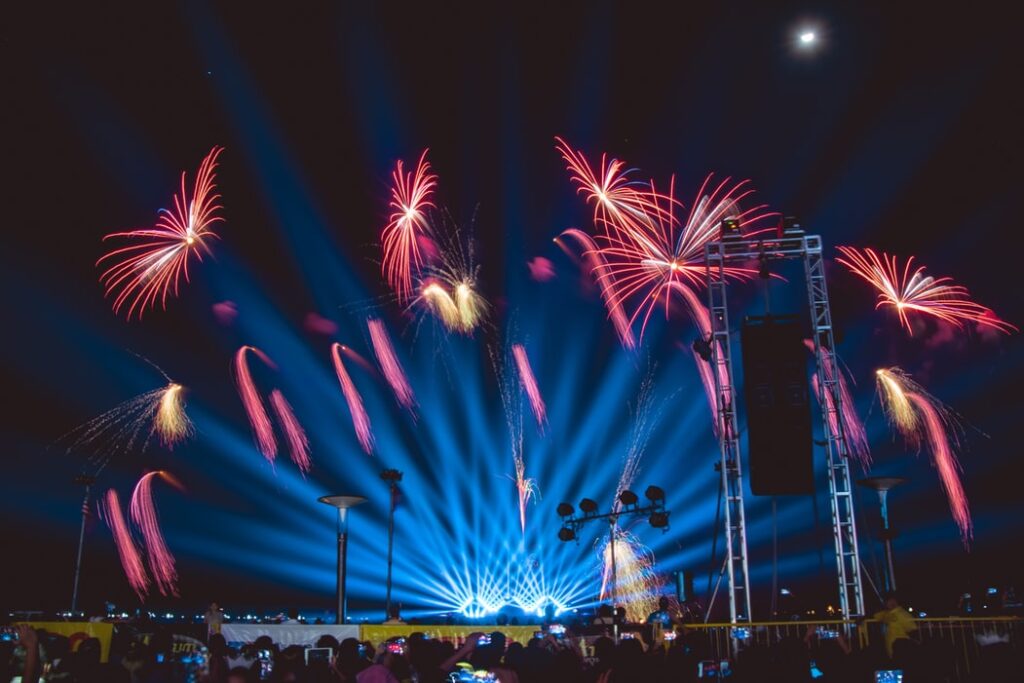
Important Equipment
A DLSR camera
A tripod
A remote shutter release (optional, but helpful)
Using a DSLR camera will allow you to have full control over the final image, which will allow you greater creative control during the process. A tripod will keep your camera steady while shooting, while a remote shutter release allows you to take photographs without directly touching the camera – which will reduce the amount of blur from camera shake in the final image. The lens you choose to use with your camera is up to you, but we’ll be going over a few popular lenses to help you make you decision.
Location
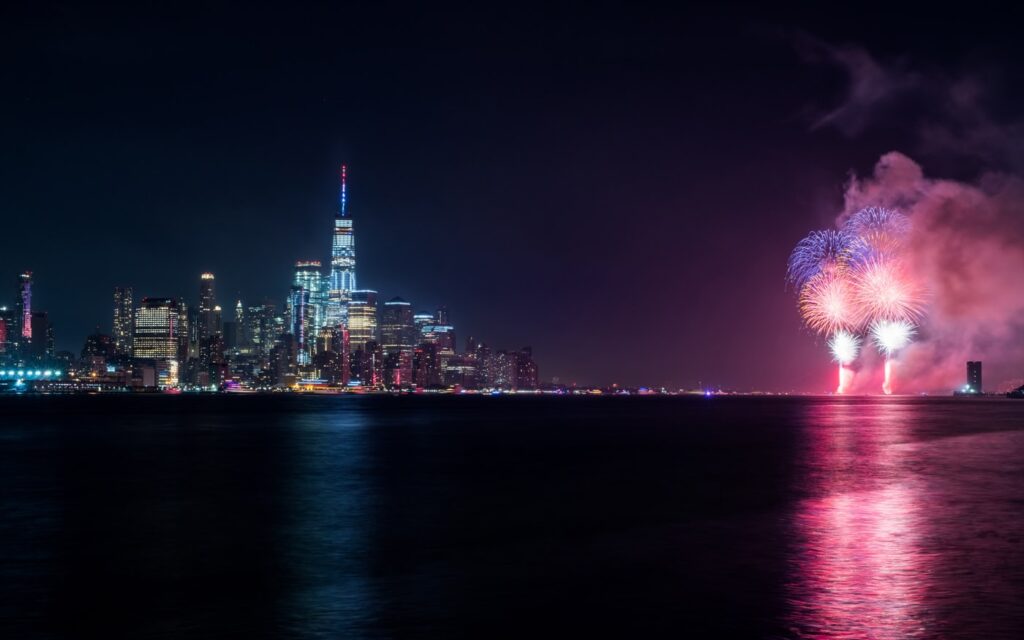
The location in which you shoot is one of the most important decisions you can make while photographing fireworks. The first step (and most obvious) is to find a location that is actually going to be setting off fireworks. You can even set off your own, just be aware of the restrictions in your own neighborhood.
If you’re going to be photographing fireworks in a place where a lot of people are expected to come and watch, it’s important to show up early. You’ll want to ensure that you get the best spot possible, and you want to give yourself enough time to set up your equipment before it gets dark and the fireworks start going off. If you’re not sure exactly where the fireworks are being set off, ask around until you find out, or try to watch people setting up.
If possible, it’s always better to be above the crowd. Make sure that there will be no people and no trees (or buildings, or other distractions) in your composition. When setting up, be sure to point your lens in the direction of the sky where the fireworks will go off to make sure there are no distractions.
Camera Settings
Before beginning to shoot, make sure your camera is in manual mode.
Your aperture should be set to somewhere between f/8 and f/16. Since the fireworks will be far away, it’s important that they remain in focus. The fireworks will be bright, so there’s no need to open up your aperture all the way. However, if your image is too dark, open it up a bit. If it’s too light, close it down.
Your shutter speed depends on what you want the final photograph to look like. While faster shutter speeds (1/250 and faster) will freeze the motion of the firework, slower shutter speeds will create a more dynamic photograph and will show the movement of the fireworks throughout the sky. You can do this by setting your camera to bulb. By using your remote shutter release, you can open the shutter as soon as the firework is set off and close it once it is gone. If you don’t have the option of bulb setting, try opening the shutter from 1-30 seconds (shorter to capture one firework, longer to capture multiple).
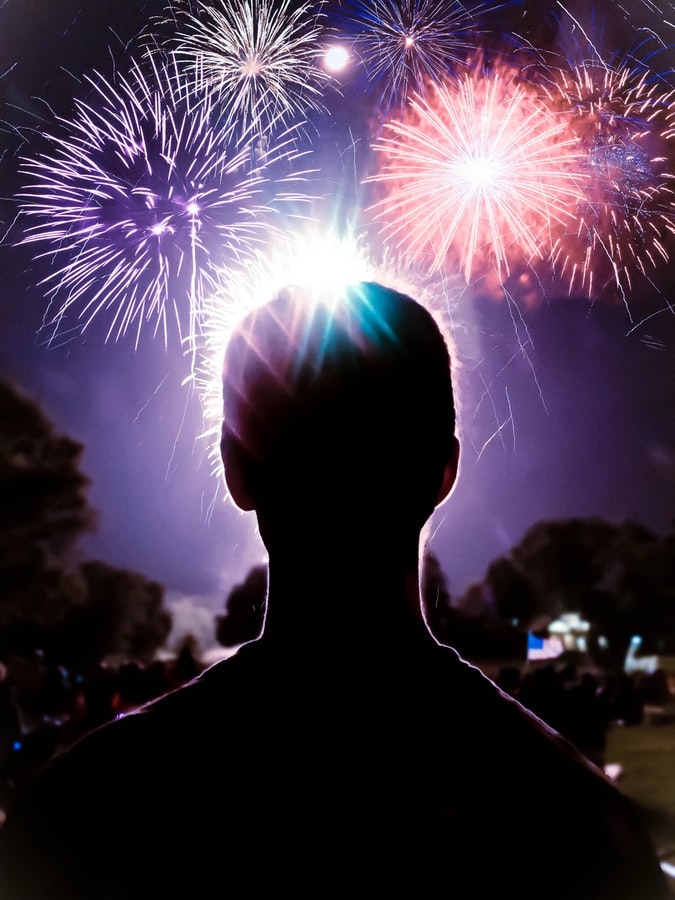
Your ISO should be set to 100 to reduce the amount of noise in the final image. This is especially important since the dark night sky will show noise very easily.
In order to focus on the fireworks, you should set your focus ring to infinity. This in combination with a smaller aperture / larger depth of field should ensure that the fireworks remain in focus throughout the entire session. Make sure you keep your lens on manual focus so it doesn’t try to adjust mid-shot. If you’re using a telephoto lens, you’ll probably have to adjust your focus accordingly.
Choosing a Lens
Do you want a close-up, more abstract shot of fireworks, or are you trying to capture fireworks in combination with a landscape shot? What you want your final photograph to look like will help you decide what lens is right for you.
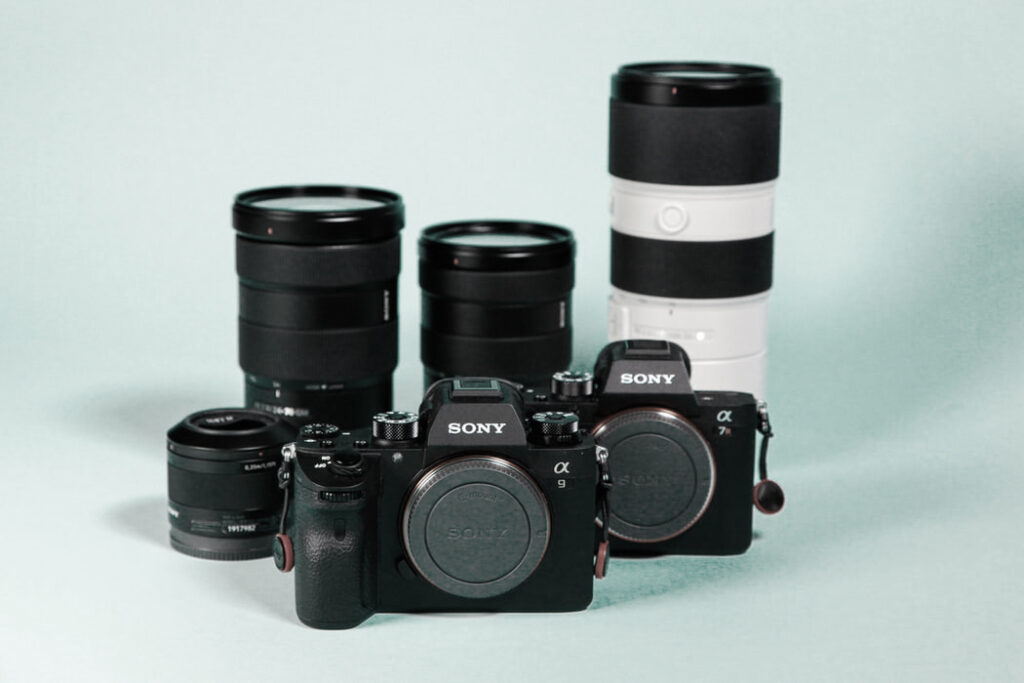
Telephoto
Using a telephoto lens will allow you to get up close and personal with the fireworks, but they’re more difficult to use. Since the fireworks aren’t shot up into the exact same spot in the sky every single time, you’ll likely have to keep adjusting your composition. Focusing on the fireworks is also not as easy as it can be with other lenses. Don’t let these problems scare you away! When used correctly, telephoto lenses can create some of the most captivating firework images. Since there is no context around the firework, viewers are forced to take in all of the light, color, and pattern they create.
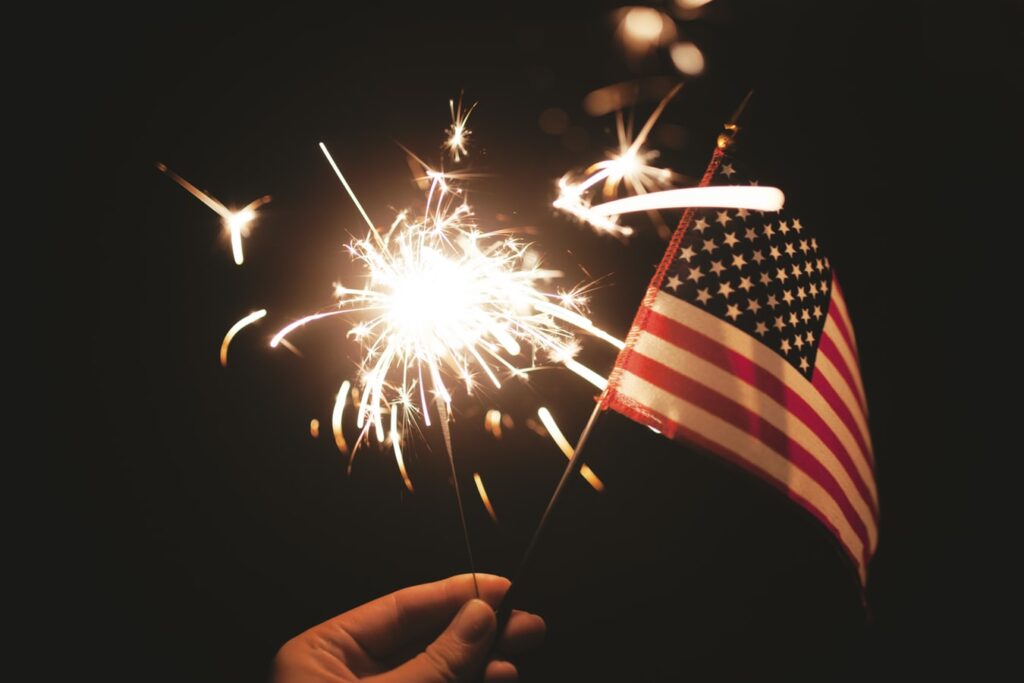
Wide Angle
Wide angle lenses are a good choice for those who want to photograph fireworks in addition to a landscape. Instead of focusing solely on the firework itself, wide angle lenses allow you to add context to your image. It’s important to be aware of your entire composition when photographing with a wide angle lens. While it can certainly add some beautiful context, the image should be weighted correctly. Take a look at the two images below: the first is too left-weighted, while the second is more accurately weighted. You can always crop your image in post-processing to get rid of unnecessary negative space, and sometimes a simple turn of the camera from horizontal to vertical can fix your problem! If photographing fireworks within a landscape or cityscape, make sure your horizon is completely level within your composition!
Good luck, and happy shooting!

